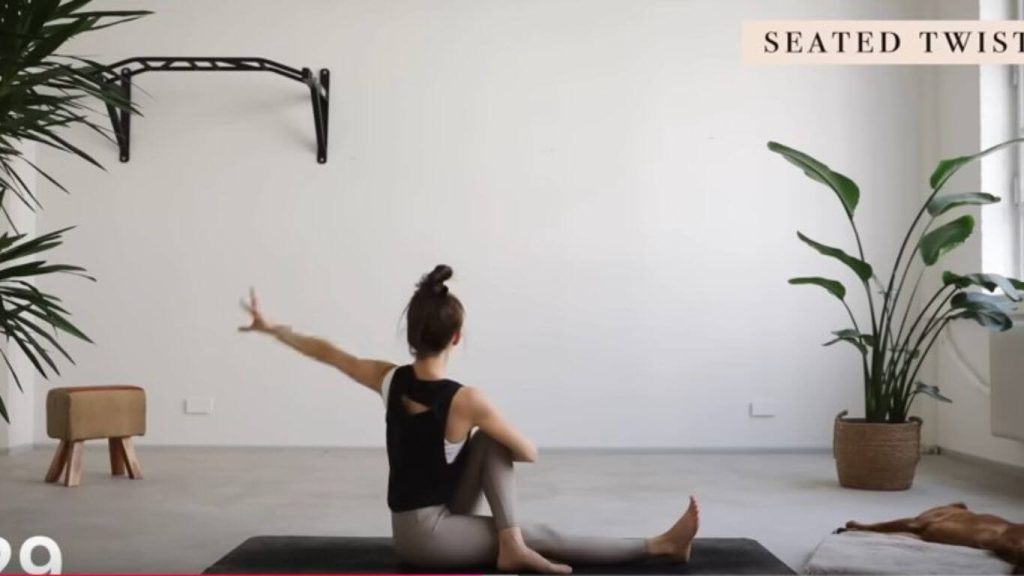As an Amazon Associate ,I earn from qualifying purchase .
Back pain can be a frustrating issue that affects daily life and workout routines. While back pain can stem from various causes, one of the most common is poor form or lack of preparation during exercise. Understanding how to prevent back pain when working out involves a strategic approach, including knowledge of the right exercises, effective post-workout recovery practices, and lifestyle modifications. Here’s an analytical look at back pain causes and remedies, with evidence-based tips to prevent it.

Understanding Back Pain: Types and Causes
Back pain can be broadly divided into lower back pain, which often stems from issues in the lumbar spine, and upper back pain, associated with the thoracic spine. Common causes of workout-related back pain include:
- Improper Lifting Technique: Incorrect form in exercises like deadlifts and squats can put undue stress on the spine.
- Overtraining: Repetitive stress without adequate rest can lead to muscle strain and spinal issues.
- Lack of Core Strength: Weak core muscles can lead to poor posture and increased strain on the back.
- Poor Posture and Ergonomics: Bad posture in daily life or while working out can lead to spinal misalignment and back pain.

Lower Back Pain Exercises to Avoid
When dealing with back pain, avoiding certain exercises can prevent further injury and promote recovery:
- Heavy Lifting Without Proper Form: Avoid lifting weights beyond your comfort zone, especially with improper form.
- Sit-Ups and Crunches: Traditional sit-ups and crunches can strain the lower back by pressing the spine into the floor, potentially worsening lower back pain.
- High-Impact Cardio: Running or jumping without proper footwear or support can cause jarring impacts on the spine.
Instead, focus on safe exercises that promote strength and flexibility in the lower back, like glute bridges, bird-dogs, and plank variations.

Single Best Exercise for Lower Back Pain
One of the best exercises for preventing lower back pain is the Cat-Cow Stretch. This movement is effective because it helps mobilize the spine, relieves tension, and improves flexibility. Here’s how to perform it:
- Start on your hands and knees, with wrists under shoulders and knees under hips.
- Inhale as you arch your back, lifting your head and tailbone.
- Exhale and round your back, tucking your chin and tailbone.
Repeat this motion slowly for 10–15 repetitions. The Cat-Cow Stretch can be incorporated into warm-ups or used as a cool-down exercise for back relief.

Lower Back Pain After Workout Remedies
Experiencing lower back pain after a workout can be discouraging. However, certain remedies can help alleviate discomfort:
- Cold and Heat Therapy: Apply ice for 10–15 minutes to reduce inflammation, then use heat to soothe tight muscles.
- Foam Rolling: A foam roller can help release tension in the back muscles, but avoid applying direct pressure to the lower back itself.
- Stretching and Yoga: Engage in gentle stretches like the child’s pose or the cobra stretch. These can help ease tension and increase flexibility.

Why Does My Upper Back Hurt After Working Out?
Upper back pain after working out is often due to muscle strain, poor posture, or lack of mobility in the thoracic spine. The muscles in the upper back can become fatigued or injured if exercises like rows or shoulder presses are performed with incorrect form.
Preventive Tips for Upper Back Pain:
- Strengthen Core and Shoulder Muscles: Strengthening these areas can improve posture and stability, reducing strain on the upper back.
- Focus on Mobility: Include exercises like thoracic rotations and shoulder dislocates to enhance upper back flexibility.

Three Simple Exercises for Back Pain Relief
For those experiencing mild to moderate back pain, these three exercises can provide relief:
- Pelvic Tilts: Lie on your back with knees bent and feet flat. Tighten your abdominal muscles and press your back into the floor. Hold for a few seconds, release, and repeat.
- Child’s Pose: A gentle stretch that elongates the spine, relieving lower back tension.
- Knee-to-Chest Stretch: While lying on your back, bring one knee towards your chest, hold, then switch legs. This stretch helps ease lower back tension.
How to Train the Lower Back Safely
Training the lower back effectively requires a focus on building endurance and strength without overloading the spine. Incorporate the following exercises:
- Bird-Dog Exercise: Enhances balance, stability, and core strength without placing stress on the lower back.
- Glute Bridges: Strengthen the glutes and core, reducing strain on the lower back.
- Hyperextensions: Use a Roman chair or hyperextension bench to perform controlled lower-back extensions, strengthening the muscles around the lumbar spine.
Perform these exercises with moderate weights and focus on high repetitions to build endurance, as opposed to heavy lifting, which can strain the back.

How to Sleep with Lower Back Pain
Quality sleep can be elusive when dealing with back pain. Here are some tips:
- Choose the Right Mattress: A medium-firm mattress provides adequate support for the spine without causing pressure points.
- Use Pillows for Support: Place a pillow between the knees if sleeping on your side or under the knees if sleeping on your back.
- Avoid Stomach Sleeping: This position can arch the back unnaturally, leading to increased strain.
How to Solve Lower Back Pain
If lower back pain persists, the following lifestyle changes can be effective:
- Strengthen the Core: Strong core muscles provide stability, reducing strain on the lower back.
- Practice Good Posture: Maintain an upright posture while sitting, standing, and exercising.
- Increase Flexibility: Stretch the hamstrings, hip flexors, and other muscles around the spine to support movement and reduce strain.
What Can I Drink to Stop Back Pain?
While there is no miracle beverage to cure back pain, certain drinks can reduce inflammation, which may ease pain over time:
- Ginger Tea: Ginger has anti-inflammatory properties that can help alleviate mild pain.
- Turmeric Milk: Curcumin, found in turmeric, has anti-inflammatory effects that may help reduce pain.
- Green Tea: Rich in antioxidants, green tea can help reduce inflammation.

How to Adjust Lower Back at Home
A gentle, self-administered lower back adjustment can relieve discomfort. Here’s a safe approach:
- Back Twist: Lie on your back with your knees bent. Slowly move your knees to one side while keeping shoulders on the floor. Hold for a few breaths, then switch sides.
- Foam Rolling: Roll gently along the spine (avoiding the lower back itself) to release tightness in the upper back and glutes.
If pain persists, consulting a professional chiropractor or physical therapist for a safe adjustment is recommended.
Best Way to Relieve Back Pain
The best way to relieve back pain includes a combination of exercise, lifestyle adjustments, and consistency. Incorporate daily stretching and core-strengthening exercises to keep your spine supported, practice good posture, and avoid exercises that may worsen pain.

Conclusion: How to Prevent Back Pain When Working Out
Preventing back pain while working out requires consistent attention to proper form, core strength, and flexibility. The best approach includes:
- Warming up thoroughly: Prepare the muscles and joints to reduce injury risk.
- Maintaining proper form: Avoid lifting too heavy and use correct technique.
- Including core and back strengthening exercises: These build resilience in the spine and surrounding muscles.
- Practicing post-exercise recovery: Stretching and foam rolling after workouts can help prevent pain.
With consistent practice, careful exercise selection, and attention to recovery, you can reduce the risk of back pain and maintain a healthy, pain-free back. If pain persists despite these measures, consulting a healthcare provider is the best step forward







